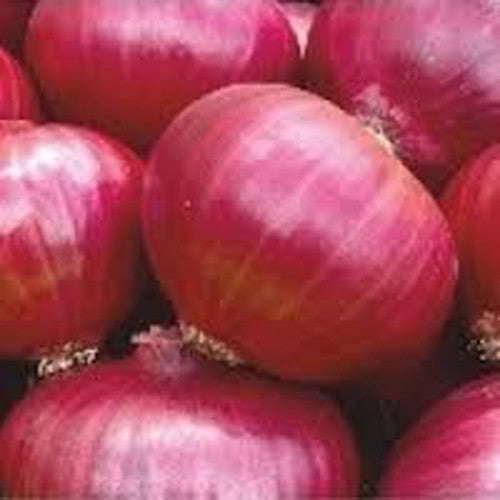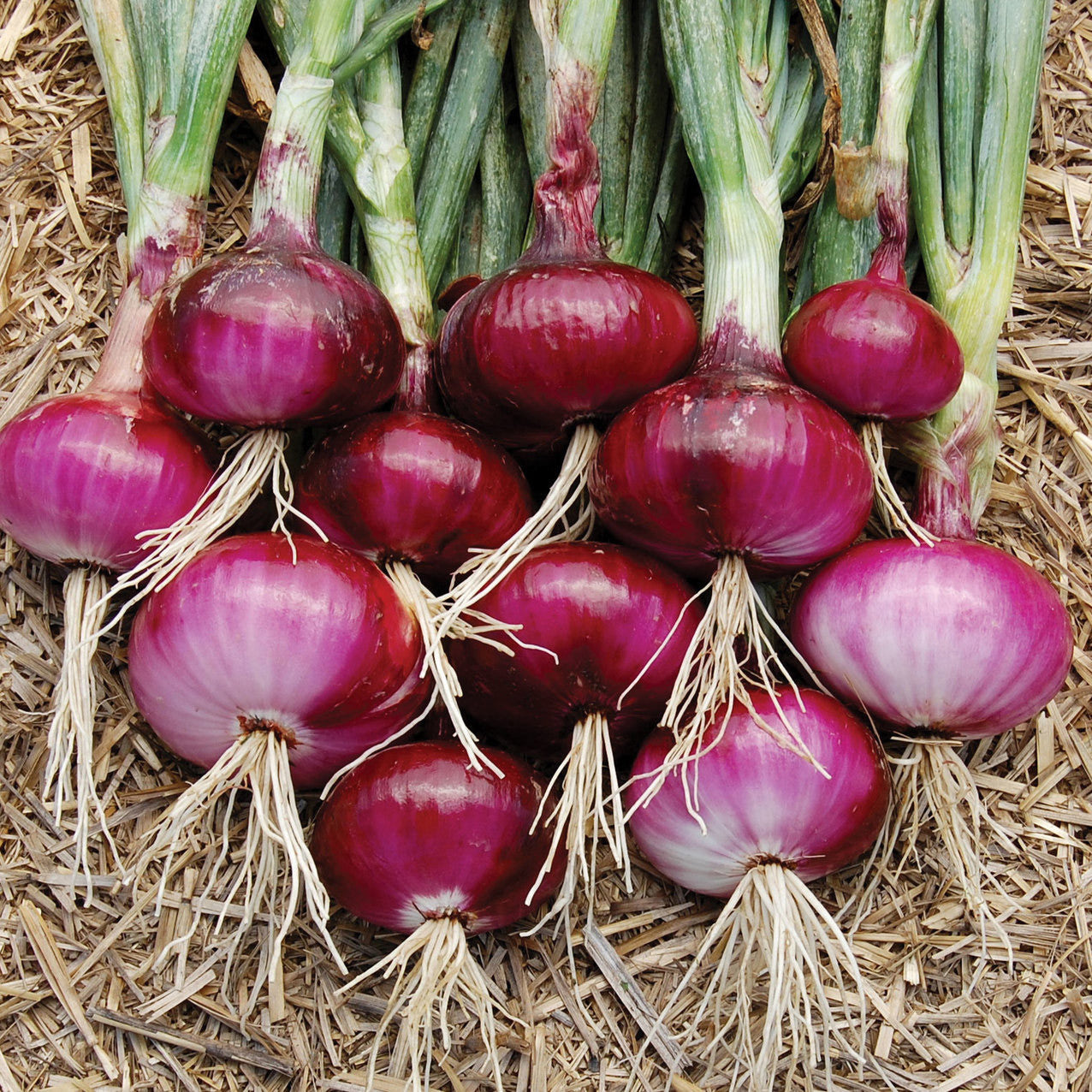Onion – Pyaaj – Desi variety with pungent red bulbs
Family
Allium
Origin
Central Asia
Description
The onion is most frequently a biennial or a perennial plant, but is usually treated as an annual and harvested in its first growing season. The onion plant has a fan of hollow, bluish-green leaves and its bulb at the base of the plant begins to swell when a certain day-length is reached. The bulbs are composed of shortened, compressed, underground stems surrounded by fleshy modified scale (leaves) that envelop a central bud at the tip of the stem. In the autumn (or in spring, in the case of overwintering onions), the foliage dies down and the outer layers of the bulb become dry and brittle.
Environment
Growing onions requires abundant sun and good drainage, and they grow best when the soil pH ranges between 6.0 and 6.8. Raised beds or raised rows made by mounding up soil are ideal, especially if existing soil is heavy clay.
Onions roots are shallow and not very efficient at taking up moisture, so they need a steady supply of water to grow without interruption. Although they actually recover well from drought and start growing again when watered, it is best to keep the soil consistently moist until the bulbs enlarge.
Sowing
Set plants 1 inch deep, so that their roots are well covered with soil but the top of the plant’s neck is not buried too deeply. Space plants 6 inches apart in furrows 12 inches apart.














